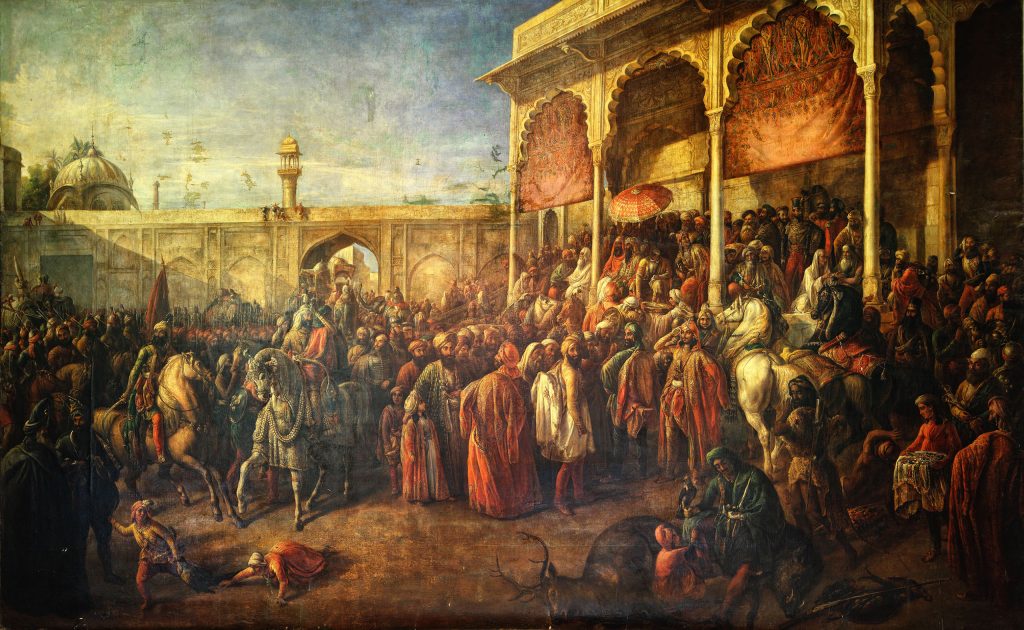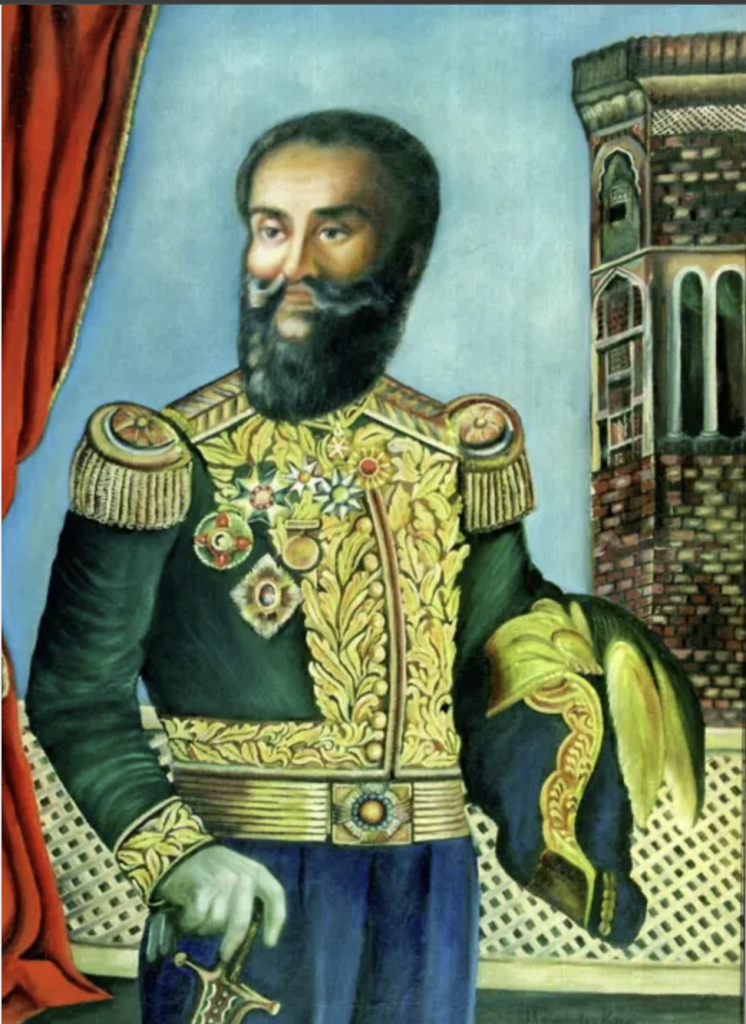Explore Kahn Singh's JANGNAMA LAHOW, a vivid poetic account of the 1845-46 Anglo-Sikh Wars, highlighting the valor of Sikh warriors.
Discover the diverse and secular legacy of Lahore Darbar, the Sikh Court led by Maharaja Ranjit Singh, showcasing a splendid blend of cultures and leadership.
Explore Moran's influence on Maharaja Ranjit Singh, from mesmerizing dances to coins in her honor. Discover her lasting legacy in Lahore's history.
Discover the life of Partap Singh, the talented and charming prince whose life was tragically cut short, leaving a mark on history with his intelligence and grace.
Explore the life of Ram Dial, a renowned Sikh general, commanding 30,000 troops by 16, and his expeditions in Kashmir, Multan, and beyond.
Discover Shah Shuja, King of Kabul's dramatic journey through power struggles, captivities, and attempted throne recoveries, impacting Afghan history.
Discover the strategic Tripartite Treaty of 1838, thwarting Sikh designs on Sindh with British mediation. Explore this pivotal Afghan-Sikh-British alliance.
ANGLOSIKH TREATY (AMRITSAR, 1809). Napoleon`s victories in Europe had alarmed the British, who, fearing a French attack on the country through Afghanistan, decided to win the Sikhs over to their side and sent a young officer, Charles Theophilus Met caife, to Maharaja Ranjit Singh`s court with an offer of friendship. Metcaife met the Maharaja in his camp at Khem Karan, near Kasur, on 12 September 1808, taking with him a large number of presents sent by the Governor General of India. He told him how the English wished to have friendly relations with him and presented to him the draft of a treaty.Ranjit Singh did not credit the theory that the British had made the proposal to him because of the danger from Napoleon. On the other hand, he showed his willingness to cooperate with the British, provided the latter recognized his claim of paramountcy over all the Majha and Malva Sikhs.
BHUPAL SINGH, a son of the Gurkha general, Amar Singh Thapa, came to Lahore and took up service under Maharaja Ranjit Singh (1780-1839). He became an officer in a battalion in the Sikh army under General Ventura. In 1838, Bhupal Singh returned to Nepal and was appointed to command a check post on the Indo Nepalese border. Two years later he was selected to lead an embassy to Lahore. He left Kathmandu on 6 June 1840, but the mission returned without transacting much business owing to the death in Lahore of Kanvar Nau Nihal Singh.
COURT, CLAUDE AUGUSTE (1793-1880), general in the Sikh army, honorary general of France, Chevalier of the Legion of Honour, recipient of the Auspicious Order of the Punjab, Fellow of the Royal Geographical Society of England, and Member of several continental scientific and learned societies, was born at Saint Cezaire, France, on 24 September 1793. In 1813. he joined the French army. After Napoleon`s defeat at Waterloo in 1815 he was dismissed from service.




